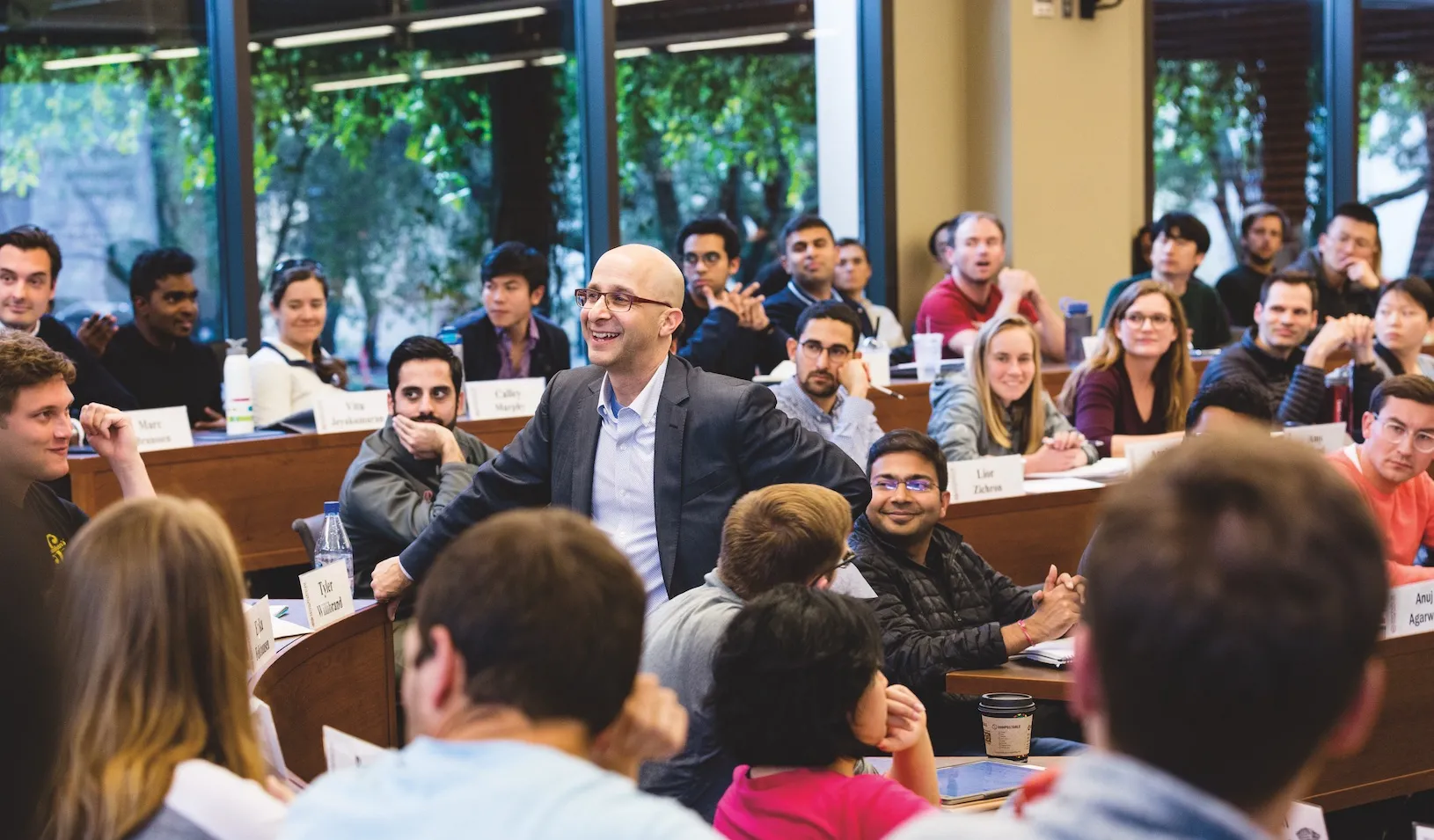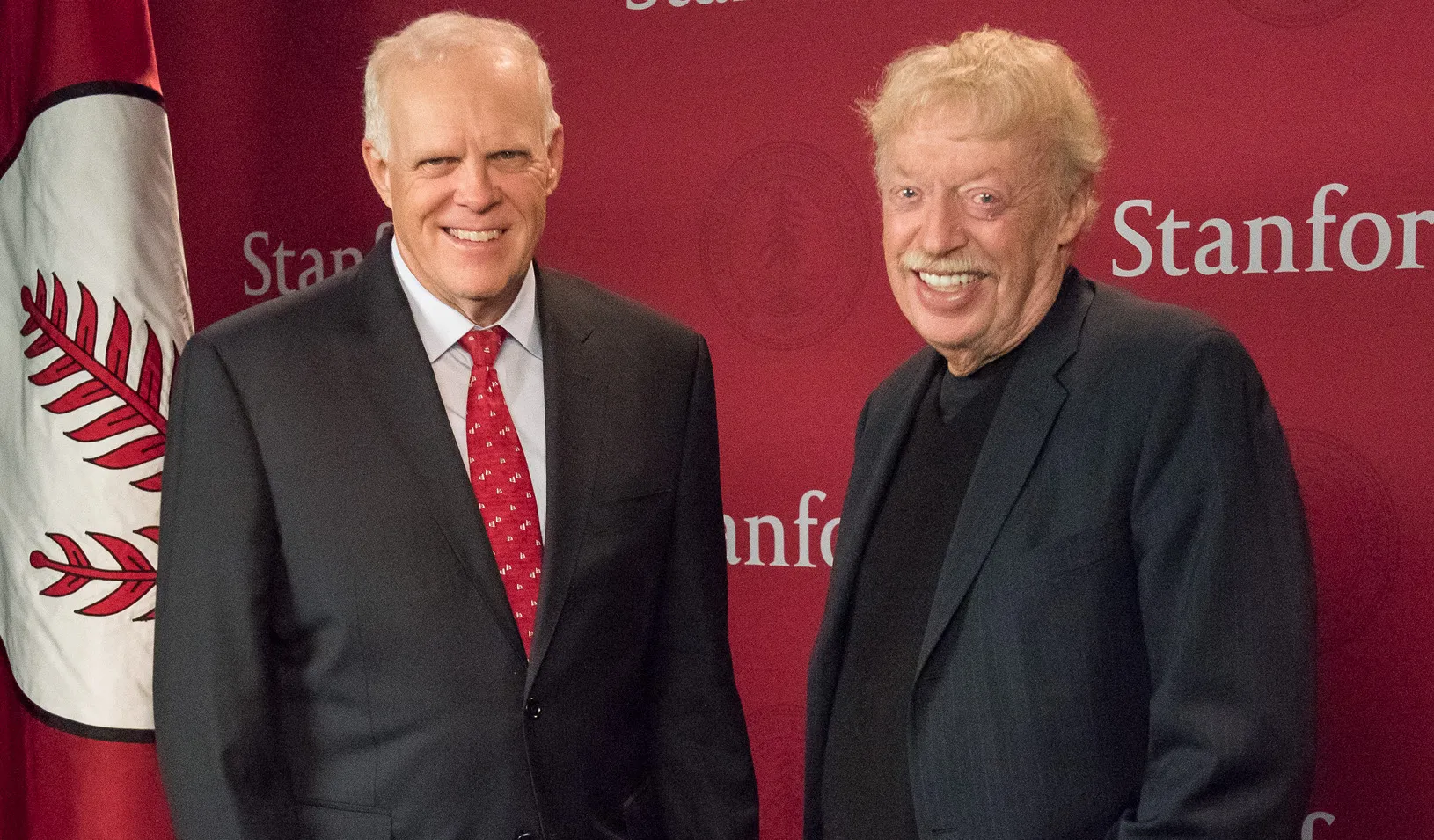Back to Class: The Industrialist’s Dilemma
This Stanford GSB course attracts CEOs from some of the world’s biggest corporations, who share how they’re navigating — or creating — digital disruption.
January 13, 2020

To ensure open discourse, instructor Robert Siegel insists that what happens in the classroom stays in the classroom. | Toni Bird
STRAMGT 520: The Industrialist’s Dilemma explores how digital technology is triggering tectonic shifts among large, established companies, whether they have a digital foundation or not. It looks at how management principles, competitive strategies, partnerships, and core competencies are being challenged. Executives from Fortune 500 companies and new disruptors visit the class to discuss what it takes to thrive in a world that increasingly blends digital and physical solutions for customers.
Editor’s Note
In this ongoing series, we bring you inside the classroom to experience a memorable Stanford GSB course.
Visitors have included the CEOs of Lyft, AT&T, Accenture, Kaiser Permanente, 23andMe, Best Buy, Charles Schwab, MGM Resorts, Johnson & Johnson, and DoorDash.
“It’s to the point where we have CEOs reaching out to us: ‘Hey, can we come to the Industrialist’s Dilemma?’” says Robert E. Siegel, the Stanford GSB lecturer in management who co-teaches the class with Aaron Levie, CEO of Box, and Maxwell Wessel, chief innovation officer at SAP. “For the students, it’s history happening in real time.”
Before the guest speaker talks, the instructors teach a case study about that guest’s company. The visitor gets to spend about 10 minutes critiquing (or rebutting) the case discussion, then finally takes questions from students. “We keep all of the classes off the record,” Siegel says. “That allows the guests to be very open, and it creates an intimate experience with the students.”
Students have two parts to their grade — a combination of classroom participation and attendance, plus an analysis of an existing industrial incumbent being disrupted by new digital entrants. The students assemble into groups of five, and each team is required to produce a 10- to 15-page paper that analyzes the firm and that must include an opinion about whether the company is failing or succeeding in dealing with the disruption.
“Our hope is that when the students leave the class, they’ll understand that these problems are infinitely more complex than what they read in the press,” Siegel says.
The skillsets and competencies that made companies great in the past — how they develop products, how they run their organizations, how they grow — are changing quickly, and firms that don’t adapt are in trouble. But it turns out that most are adapting.
“When we started the course, one of our theses was that the disruptors were going to completely upend the incumbents, but we’re finding that that thesis was wrong,” Siegel says. “The notion of ‘incumbent dinosaurs’ — that’s a myth. The people who run these incumbent companies are smart and on top of these global shifts. They understand the implications of all this change. Whether or not they will succeed will depend on their strategy and their execution. But everyone’s awake.”
— Steve Hawk
For media inquiries, visit the Newsroom.
Explore More
Phil Knight Honored with Uncommon Citizen Award

Catherine Roberts Joins Stanford GSB as CCMO

Alyssa Rapp, MBA ’05: What Matters to Me Now and Why
